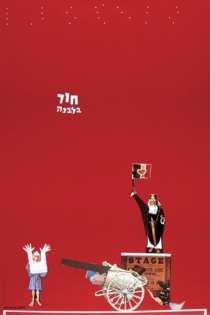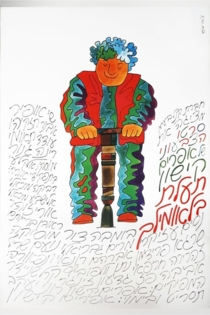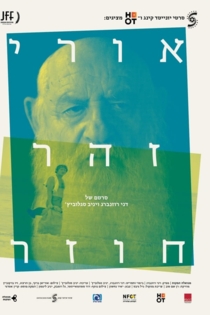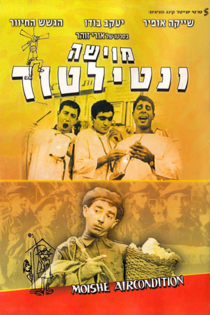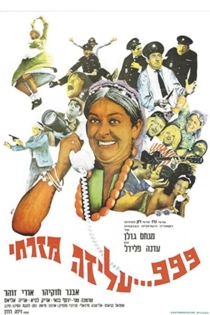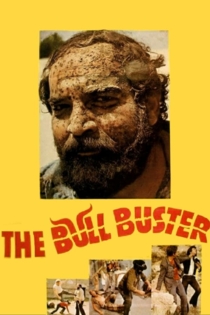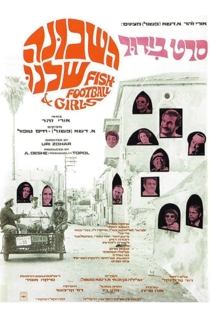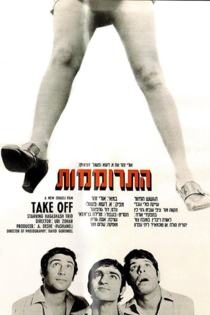
Uri Zohar
1935 (89 лет)Shlosha Yamim Veyeled
Uri Zohar
Oded Kotler, Shai Oshorov
Based on a short story by Abraham B. Jehoshua, the movie follows Eli (Oded Kotler) taking care of an old girlfriend's child for three days. He wants him to get hurt, he worries about him. Will the child survive the three days? Will Eli?
Three Days and a Child

שבלול
Boaz Davidson
Arik Einstein, Shalom Hanoch
A musical, semi-documentary motion picture considering the making of "Shablul", a rock album by Arik Einstein and Shalom Hanoch. The film demonstrates fragments of being, a few funny sketches and musical numbers, much affected by The Beatles' flicks. "Shablul" reminds its viewers the taste of 60s, showing them the Israeli pop/rock scene of these jolly years.
The Snail

Kol Mamzer Melech
Uri Zohar
Yehoram Gaon, Oded Kotler
An American reporter and his girl-friend are visiting Israel to get a "sense of the people", in the process he meets many Israelis and some Arabs as well, particularly becoming friends with an Israeli Army reserve officer as well as an idealistic young man who is a pacifist.
Every Bastard a King
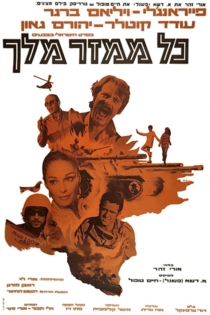
עץ או פלסטיין
Nathan Axelrod, Uri Zohar
Ori Levy, Chaim Topol
Hundreds of hours of raw material shot by Nathan Axelrod, a pioneer of Israeli filmmaking before the State of Israel who documented the building of the Jewish Yishuv in Palestine – are the building blocks of the film before us: Meir Dizengoff riding his horse, Hannah Maron as a young girl trying to sell us shoelaces, the inauguration of the new port in Tel Aviv, settlers breaking ground in Hanita, the Habima Theater and Hannah Robina, the stars of the Matateh Theater, two kids tap-dancing, Ben Gurion and Shlonsky`s hair-dos, a Tel Aviv soccer match, the illegal immigration, scenic shots (swamps and desert), and more and more from the never-ending treasures of the “Carmel Films” archive.
The True Story of Palestine
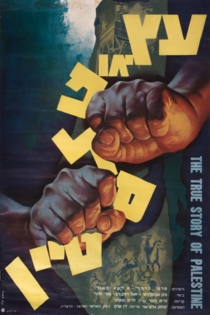
חור בלבנה
Uri Zohar
Arik Leibovitch, Shmulik Kraus
A comic and episodic satire, the film uses improvisation to illustrate the clash between fantasy and reality in real life. Although conceived in the style of Mekas’ “Hallelujah the hills” (1962), it’s an authentically Israeli satire, an openly rebellious and individualistic expression that poked fun at the sacred myths of earlier zionist films. The technique of film within the film is used to portray cinema as reflection of the imagination, a miracle based on dreams and fantasies that take on concrete characteristics – parallel to the miracle of Israel, the dream that has become reality. Although not a commercial success, its importance is beyond any measure, though it remains a unique experiment, boldly uncommercial and subversive, out of any context in that patriotic, ideological epoch.
Hole in the Moon
